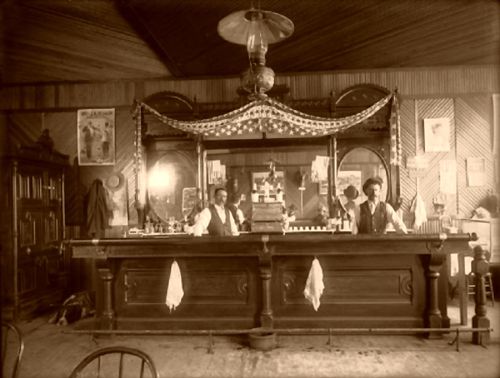
Western towns liked to show the Easterners that they were as up to date as Kansas City, New York, or Boston. For example, prosperous towns like Denver, Dodge City and Tombstone could compete with the best of them. Sometimes they got downright defensive about it. A Denver millionaire named Horace Tabor financed an opera house for Denver. When the citizens posted a picture of William Shakespeare in the lobby and when Tabor saw it, he scoffed, “What the hell did he ever do for Denver? Take his picture down and put mine up.” Shakespeare was taken down and replaced by Tabor.
Granted, one might not find the same cuisine in Broken Pelvis, Montana. You might want to take a look at Sherry Monahan’s excellent book, “A Taste of Tombstone.” I keep a copy handy on my bookshelf. Here are some excerpts from Sherry: “There are a number of menus pictured with some pretty fancy dishes. “By mid-1881 there were several fancy restaurants, including Chinese, Italian and Mexican. Several upscale “Continental” establishments, and many home cooking hot spots including Nellie Cashman’s famous Russ House in Tombstone. French food was trendy. There was a restaurant where extravagant French food was served. Even the menus were in French. Also, on the menu was fresh fish and shellfish, oysters and lobster brought in from Baltimore and California. A gourmet might even order oysters under glass. Tombstone could afford to serve the very best wines and liquors. Believe it or not the gin fizz toddy was a favorite in Tombstone. Imagine Wyatt Earp and Doc Holliday bellying up to the bar and saying ‘Barkeep, we’ll have a gin-fizz toddy.’
“Tombstone also had some fancy wine bars. Kelly’s Wine Bar had twenty-six brands imported from Europe. In Denver, cowboys could visit Moon’s Oyster Ocean restaurant, which offered chicken giblet soup, broiled trout, stuffed roast tame duck, giblet patties, roast beef, and mutton. Moon’s competitor, Jack Lambert, offered a slightly more upscale menu—and all for 50 cents—that included roast pork with cranberry sauce or corned beef and cabbage served with mashed potatoes, green peas and green (fresh) corn. He also served white, graham or corn bread. All his desserts included pudding, two kinds of pie, fruits, tea, and coffee.





